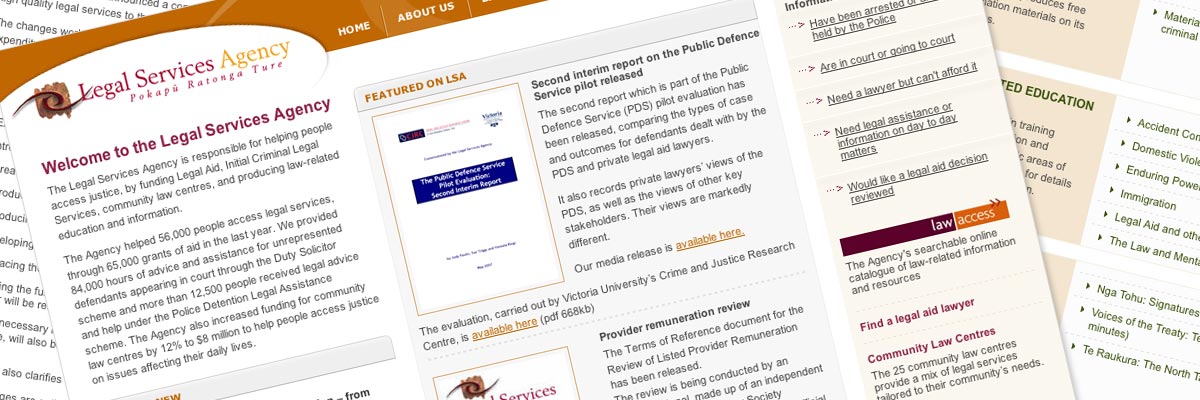
Legal Services Agency
Size: 17 template pages
Government status: Government-funded Agency
My professional status: employee at Shift
Website client: Legal Services Agency
Dates: January 2007
Categories: Front-end developer, Govt web standards tester, CSS-based layout, e-govt/WCAG compliance, Other CMS, Government websites, Medium sites
Brief: to build a set of templates (utilising three colourways for different sections of the site) for the Legal Services Agency website, which would then be handed over to their existing CMS team for integration into a content management system.
My responsibilities included:
- Development of the templates in CSS and HTML 4.01 Transitional
- Hand-coding in HTML 4.01 Transitional to a high level of accessibility, following NZ e-government Guidelines - achieving all level 1 and 2 criteria, and most of level 3
- Extensive testing of the site at all stages of the development process, ensuring complete consistency across the following browsers and platforms:
- PC: Internet Explorer 5.01, IE5.5, IE6, IE7; Firefox, Netscape, Opera
- Mac: Firefox, Netscape, Opera, Safari
- Ensuring that every page and stylesheet had been validated using the W3C Markup Validation Service and that it conformed to HTML 4.01 Transitional requirements
- Feedback to the client post-CMS integration, indicating areas where e-government compliance and accessibility had yet to be implemented by the CMS team.
This was a pretty little site, which went very smoothly in terms of the HTML build. It had three main sections which are differentiated using different colourways. It was unusual for me in that it's one of the few sites where I used PNGs - not because I don't like PNGs, but because I've yet to find my perfect PNG hack for IE6 and below. In the end I decided to go with the bgsleight.js technique. The most interesting aspect of the build for me was the use of multiple tabs for navigation in some pages, which was achieved using Doug Bowman's Sliding Doors technique.
Once the site had been incorporated into the CMS by their team, we were invited to provide feedback on how successfully the e-govt and accessibility compliance techniques had been integrated into the CMS version.

